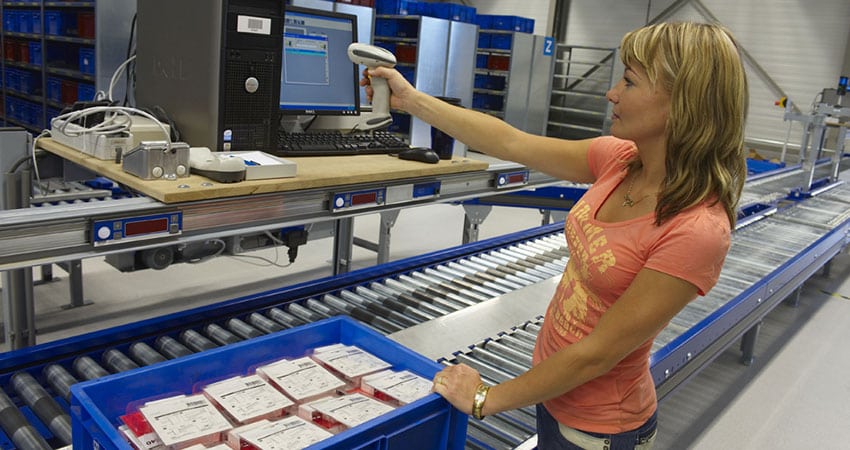One of the biggest challenges companies face in acquiring a new WMS (warehouse management system) is how to budget accurately. In our experience, 50% of major systems projects are not completed within the proposed budget or time frame.
To make matters worse, when companies ask WMS vendors for the cost, they may get an incomplete picture, for fear of being ruled out early. To develop an accurate budget for replacing your current warehouse system, focus on the following cost categories.
9 Prerequisites for Your New WMS Project
To start, here are 9 prerequisites for ecommerce companies to maximize WMS benefits. Be sure to factor these into the project’s cost and time schedule.
Software license fee: Costs are typically based either on the total number of concurrent users or named users. Some WMS vendors utilize other data such as annual orders. Be sure you understand the number of handheld users and others that need system access to determine an accurate number of seats. Is there a seasonal licensing plan for peak use annually? How will your growth impact your license needs over the next two to three years?
Optional modules: Early in system selection, it may be hard to determine what functions are available from the base system vs. optional modules based on demos. Until you’re sure of the functionality, budget for additional modules until you know they’re not needed. Optional modules include transportation management, labor management and complex slotting programs. Make sure of the base functions and modules before signing an agreement.
Server hardware or hosting: Some WMS vendors offer on-premise and hosted cloud solutions, while others only offer a single license. What level of redundancy do you need? How will backups be managed and supported, onsite and offsite? For on-premise solutions, does the server offer enough capacity for growth? For hosting, will you require a dedicated server? Be sure to provide each vendor with accurate transactional data to properly size the server environment. For many SaaS vendors, hosting is included is bundled with the software license.
Maintenance and support: Sometimes this isn’t budgeted to save money. We would advise at least taking it through year one. Sometimes it’s paid at contract, at go live or after an initial warranty period. The amount is commonly calculated as a percentage of the list software license fee. For SaaS options, it’s bundled into the software license fee.
Professional services: Typically, implementation and conversion costs will be the same regardless of the pricing model you choose. These one-time startup costs are for the vendor’s project management and travel to conduct discovery/gap analysis and implementation. Their project management is for direction of technical and programming tasks, not implementation of overall project (see Internal Costs below). There will also be ongoing site visits to follow up on implementation tasks, training, conference room pilots, and go-live assistance. Our previous blog discusses nine considerations to ready for WMS installation.
This category includes the biggest budget shortfalls. Vendors may underestimate or quote professional services to stay within management’s budget. But still, management may come back and say, “How can it be that high?” and approves a lower budget. Or worse yet, they think they can manage it down during implementation. Triple whammy! Budget a contingency requiring management approval for professional services, especially with complex integrations or modifications. Travel through each phase of the install may be 10%-15% of the professional services cost.
Modifications: Do your best to avoid modifications as they add cost, risk and time to a project. If you need to make modifications, outline them in detail to get the cost and schedule. If you’re unaware at the time of budgeting whether they’re needed, plan some contingency dollars. A fair number would be in the neighborhood of 15%-25% of the base software license costs.
Internal costs: All budgeting so far has focused on the WMS vendor’s costs. Most companies do not budget internal costs accurately. Will you need to hire an internal project manager? This is your responsibility.
How much travel during selection and due diligence to the vendor and client site? Will you require new end user workstations, or operating system and network upgrades? Do you have all the resources to support file conversions or will you need to hire someone? Will you need to budget integration for other vendors in the planning phases? Do you have multiple sites that will mean additional travel? Will this project require overtime for various departments?
Wireless and handheld devices: You can install a new WMS and remain paper-based but you’ll be missing out on the core strengths of wireless devices. If you intend to utilize existing devices, make sure they’re compatible with your WMS’s hardware and software.
Consider which devices are best suited for each task, such as truck-mounted devices putaway and wrist-mounted devices for hands-free picking and other tasks. Also, budget for items like additional batteries if you run multiple or extended shifts; sufficient charging docks and rugged cases; spare units for accidents or malfunctions; and a warranty plan for faster replacement service.
Contingency: Management may resist this category but you can never budget for every cost. We recommend a 20%-25% contingency for the overall project and seek management approval when needed. It’s better to do this than to underestimate the cost and have to go back for additional dollars.
Consider all these cost categories and present a complete budget before proceeding for approval. In doing so you will plan realistically and have a better chance of installing within budget and one time.
Brian Barry is President of F. Curtis Barry & Company

